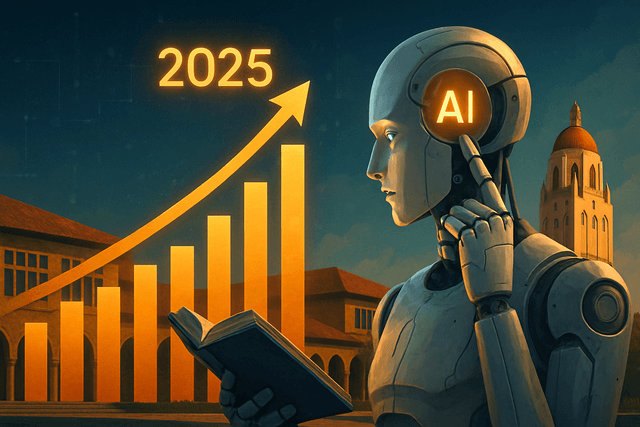Stanford University's Institute for Human-Centered Artificial Intelligence (HAI) has released its 2025 AI Index Report, offering a comprehensive analysis of artificial intelligence's global state and trajectory.
The report, led by an interdisciplinary steering committee of experts from academia and industry, reveals that corporate AI investment reached $252.3 billion in 2024, with private investment climbing 44.5% and mergers and acquisitions up 12.1% from the previous year. U.S. private AI investment dominated at $109.1 billion, nearly 12 times higher than China's $9.3 billion and 24 times the UK's $4.5 billion. The gap is even more pronounced in generative AI, where U.S. investment exceeded the combined total of China and the European Union plus UK by $25.4 billion.
Business adoption of AI has accelerated significantly, with 78% of organizations reporting AI use in 2024, up from 55% in 2023. Similarly, the number of respondents using generative AI in at least one business function more than doubled—from 33% in 2023 to 71% last year.
The report highlights dramatic improvements in AI capabilities. New benchmarks introduced in 2023 saw performance increases of 18.8 to 67.3 percentage points within just one year. AI systems also made major strides in generating high-quality video, and in some settings, language model agents even outperformed humans in programming tasks.
On the policy front, U.S. federal agencies introduced 59 AI-related regulations in 2024—more than double the number in 2023. Globally, legislative mentions of AI rose 21.3% across 75 countries since 2023, marking a ninefold increase since 2016. Governments are also investing heavily: China launched a $47.5 billion semiconductor fund, France committed €109 billion to AI and digital projects, and Saudi Arabia initiated a $100 billion AI development program.
In education, two-thirds of countries now offer or plan to offer K-12 computer science education—twice as many as in 2019—with Africa and Latin America making the most progress. However, access remains limited in many regions due to basic infrastructure gaps like electricity.

